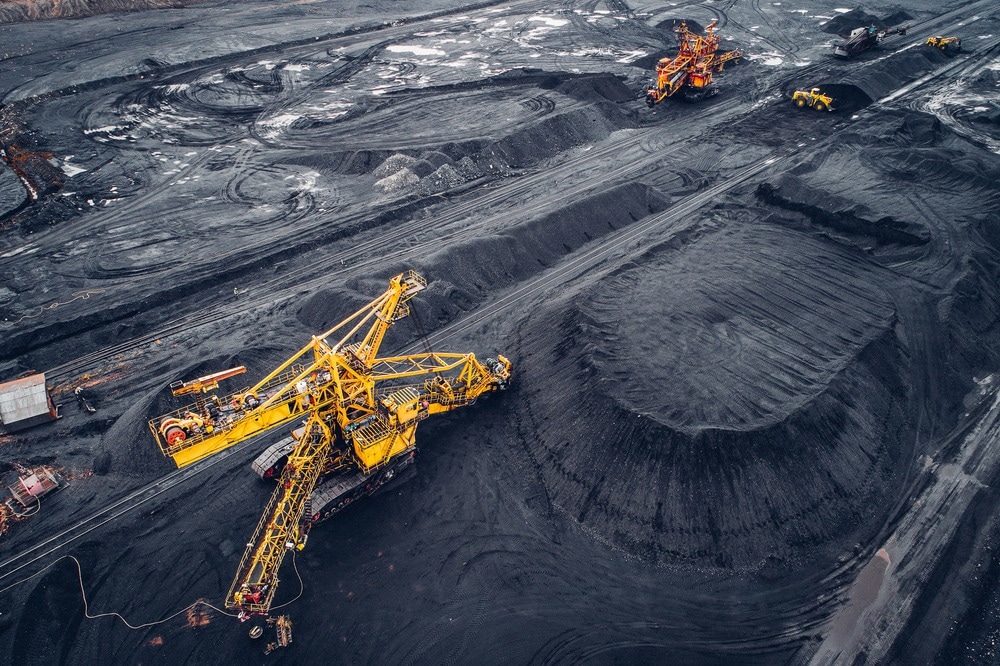Worker safety, productivity, and sustainability are among the most important factors in effectively operating mines. As a result, robotic and automatic approaches to improve worker safety are at the forefront of research and development in the mining and robotics industries.

Image Credit: Mark Agnor/Shutterstock.com
An upcoming report by the statistics and research consultants GlobalData says that robot technology will be essential for any mining company intending to remain competitive in the near future. As well as safety, robotics helps mining operations improve productivity and sustainability. The market forecast for industrial robotics reflects this, and it is expected to grow at a sizable CAGR of 37.5% over the rest of this decade, from $14.6 billion in 2020 to $352.1 billion by 2030.
Removing human workers from dangerous zones is a failsafe means of ensuring mining operations in those areas are safe.
Drilling rigs, for example, have been operated and supervised remotely, removing human beings from often dangerous, volatile drill sites. Haulage operations can be carried out with self-driving, rugged vehicles, including some electric vehicles with automatic recharging processes. Underground mining activities can also be carried out without humans being physically present in the hazardous area, with high wall and underwater inspection tasks carried out by drones, land rovers, and underwater robots.
This article discusses examples of robotic technology used to improve safety in mining operations worldwide.
Australian Nickel Mine Crisis Averted with Robot Assistance
In 2018, a water pipe that had become dangerously over-pressurized was discovered deep underground in a drill hole at a BHP Nickel West nickel mine in Australia. BHP contacted Woodside and Deakin University, University of Texas, Clearpath, and NASA robotics engineer for assistance in dealing with an over-pressurized pipe.
The team guided a robot remotely through the tunnel, where it cut the pipe to relieve pressure. Once the operation was complete, a human team entered the now-safe tunnel to retrieve the robot.
This operation would have been hazardous and less successful if it were not for the robotic equipment and safe remote operations it provided. The entire process, from discovery to planning and resolution, took less than two weeks, which was faster due to the team’s ability to deploy a robot to the scene.
Autonomous Robotic Safety System Developed at West Virginia University
Roof collapses and falling debris are some of the main reasons for accidents in underground mines, sometimes resulting in worker injuries and death. To tackle this safety issue, West Virginia University (WVU) engineers are developing an autonomous robotic safety system to monitor underground mines’ structural integrity and safety. The system should help prevent injuries or death to miners from roof collapse and falling debris events.
WVU’s Dr. Ihsan Berk Tulu and Dr. Jason Gross are behind the autonomous robotic system. So-called “fall-of-ground” accidents are a leading cause of injuries in the US’s underground mines.
Fall-of-ground events occur when parts of a pillar or the roof of an underground mine collapse. Recently, a Whitney, Pennsylvania mine reported a pillar collapse, highlighting the ongoing safety risk posed by these events and the need for systems like the one developed at WVU.
The engineers combine remote vehicles by attaching drones to remotely operated ground vehicles. The robotic system then creates high-resolution 3D maps of an underground mine, assessing the pillars and roof for damage.
The 3D maps monitor the mine pillars’ structural integrity over time and enable the team to detect dangerous conditions that could lead to collapse early on.
So far, the team has designed the robotic system and is in the process of integrating sensors. Various software components, including boundary element software provided by LaModel, are also under examination, with tests currently being run in simulation environments.
Queen’s University, Canada Research on Automatic Loading
New robotic technology developed by Queen’s University engineers automates loading an underground load haul dump (LHD) bucket with broken-up pieces of rock. The technology makes the process more efficient and improves worker safety.
The researchers have partnered with PARTEQ Innovations and Atlas Copco to commercialize this technology. The latter firm plans to develop the technology further and integrate it with its LHD vehicles in the future.
Will Robotics and Mining Continue to Develop Together?
Mining faces multiple challenges today. The availability of resources is diminishing, and as a result, so is the profitability of mining operations worldwide. Social and moral concerns around environmental sustainability, workers’ safety and rights, and land use changes add to the pressures of operating a mining operation in the 21st century.
Advanced robotic and automation technologies can relieve these pressures. In many instances, they already are. Ongoing challenges for robotics applications in mining include increasing reliability in demanding, rugged operations and increasing the scope of robots to carry out more mining functions.
References and Further Reading
Robotic technology promises to improve mining safety. (2015) [Online] Phys.org. Available at: https://phys.org/news/2015-05-robotic-technology-safety.html (Accessed on 24 November 2022).
Robotics – indispensable tools for the future of mining. (2022) [Online] Mining Technology. Available at: https://www.mining-technology.com/comment/robotics-future-mining/ (Accessed on 24 November 2022).
WVU Engineers Utilize Robots to Improve Mine Safety. [Online] West Virginia University. Available at: https://research.statler.wvu.edu/research-projects/wvu-engineers-utilize-robots-to-improve-mine-safety (Accessed on 24 November 2022).
Disclaimer: The views expressed here are those of the author expressed in their private capacity and do not necessarily represent the views of AZoM.com Limited T/A AZoNetwork the owner and operator of this website. This disclaimer forms part of the Terms and conditions of use of this website.